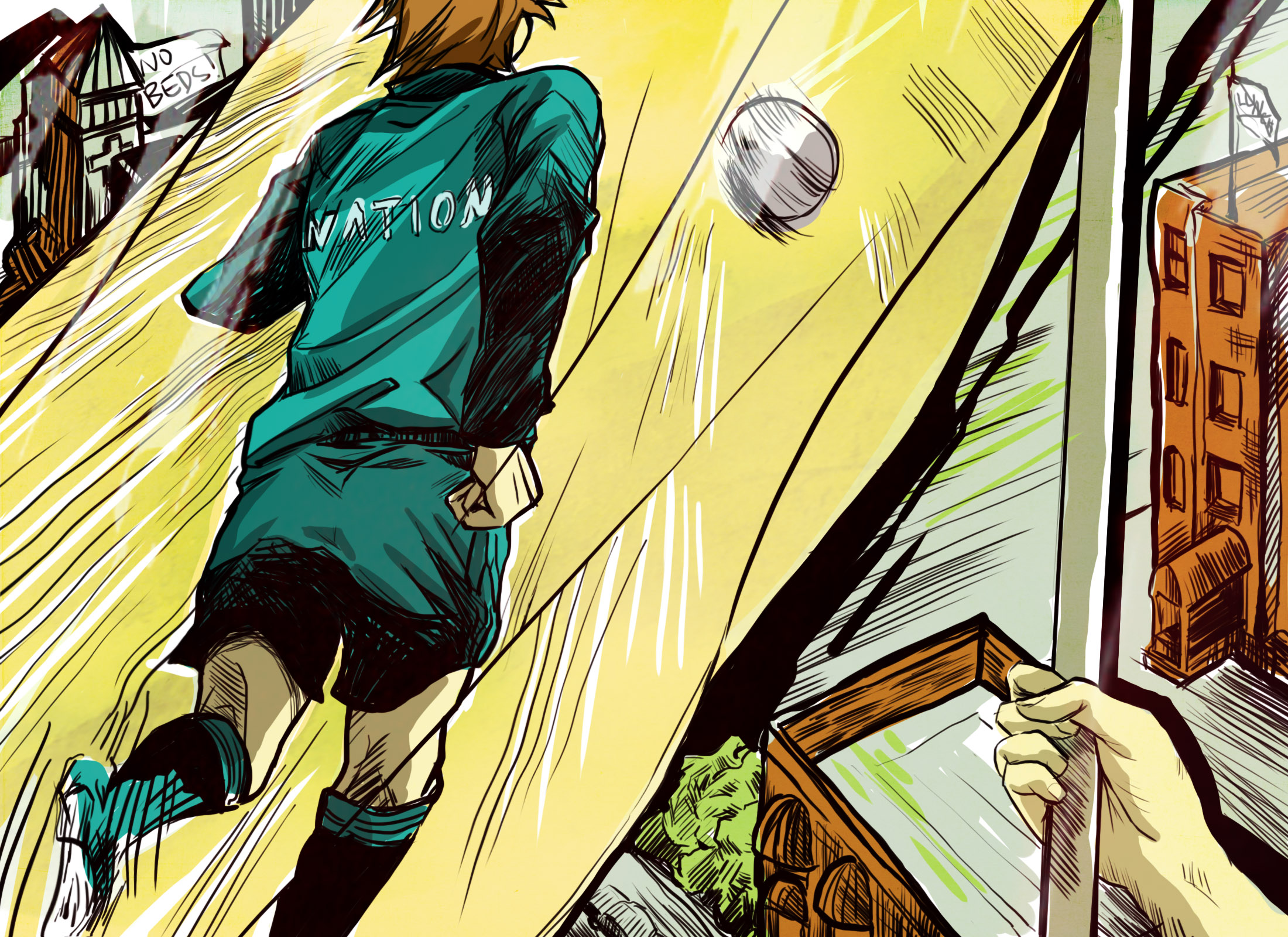International sports events provide an excuse for entirely different regions to unite under the arbitrary lines imposed by economic and political sanctions established eons ago. It’s the time when people from Alberta and Quebec agree on something, and everyone sets aside their hatred for Torontonians because more people means you can shout louder.
The upcoming World Cup in the idyllic pastures of Rio de Janeiro is no different. The World Cup, championing the very top of the world’s most popular sport, unites widely different peoples across large geographical demarcations.
In Spain, the World Cup provokes the most national pride, with Catalans and Basques screaming in the streets, not at each other, but for the same team. Spain, a country with a long history of fascist rule, carries a deep mistrust for nationalism. However, during the World Cup, a phenomenon dubbed the ‘Red Effect’ takes hold of the streets, transforming separatist blocks into crimson Candy Lands. Like Canada, Spain is a nation of nations, but while the Canadian House of Commons recognized the Québécois as a nation in 2006, Spain’s constitutional court has affirmed in 2010 that its “constitution recognises no nation but Spain,” much to the chagrin of civic national Catalans. Thousands of Catalans marched in opposition; yet, Josep-Lluís Carod-Rovira, leader of the separatist Republican Left of Catalonia, lamented, “This is ridiculous. […] We will end up with more Spanish flags being waved for the Spain-Holland match on Sunday than Catalan flags on the Saturday demonstration.”
But ridiculous is the name of the game. The World Cup was forever changed in 1934, when Mussolini’s regime brought nationalism to the forefront of the games. Hosting the cup, Mussolini’s administration took the World Cup as an opportunity to show off. One Italian official remarked that “the attention of the world of sport will turn itself on Italy,” and stressed the opportunity to demonstrate the regime’s entire range of skills. During the games, people cried out “Duce,” and the marching bands played fascist hymns. One observer called it “a Fascist rally rather than a sporting contest.”
Much like Spain and Italy, Germany is another World Cup participant struggling with the lingering memory of past fascist influences. A country wary of overt displays of national pride after the Second World War takes the World Cup as the exception. In 2006, Germany hosted the games, with the number of visible German flags rivaling an American Walmart on the Fourth of July. The prominent flags became the second most-discussed topic in the national news media. The situation has since risen in intensity, as exemplified by the racist comments on Twitter directed at Turkish-born player Mesut Özil during the UEFA Euro 2012 tournament.
The history of modern football since the interwar period is one of allegorical national propaganda. States pounce on the ability to overtly celebrate nationalism under the guise of friendly competition.
But besides Europe, what is Brazil’s place in all of this? By most accounts, this World Cup has not been commissioned for the people, but for the government and for corporate technocrats. According to reports by Forbes and Bloomberg in the fall of 2013, the original budget of under a billion US dollars has inflated to over $3.5 billion. The final number is estimated by some to exceed $14.5 billion – an increase attributed largely to corruption. Still many supporters cite as a sign of hope the estimate from Aldo Rebelo, the Minister of Sport, who projects an economic boost of $90 billion to Brazil’s GDP by 2019.
However, this number does not reveal where all this money will go, as of right now most of Brazil’s spending is focused on short- term projects. Instead of building schools and hospitals, the government is building monuments. Footballer turned politician Romário de Souza Faria – better known as simply Romário – urged his peers to wake up to the growing political unrest. In an interview with the New York Times, Romário described, “You see hospitals with no beds […] You see hospitals with people on the floor. You see schools that don’t have lunch for kids.” The result is a very lavish infrastructure, on display for the world to see, that lacks essential services and is impossible to maintain for long afterward.
The problem is that there is a dangerous precedent for this decorative nationalism in Brazil. Today, Brazil is a rising nation, its economy becoming among the largest in the world. It is a situation very similar to the early 1960s, when Brazil’s economy had never been stronger. The government decided to display this newfound wealth in the creation of an entirely new and meticulously designed capital called Brasília. Brasília is infamous, particularly among architects and urban geographers. It showed the full potential of modernist architecture in an urban environment. The city looked like a spaceship – indeed, it was designed with one in mind.
The city was designed by the famed architect Oscar Niemeyer, made from highly durable and inexpensive material, with buildings of smaller height. But Brasília was built to satisfy the officials’ dreams rather than the people’s needs. As Edward Glaeser wrote, “The modernists were good at designing functional and striking structures, but far weaker at understanding how these structures fit together to form a city.” In the haste to create a city of the future, Brazil created a dysfunctional one, with its people bearing the cost. Today, we see a similar situation with the World Cup.
While we debate the effects of nationalism, we should also attempt to answer the questions it leaves us with. But the people need to ask themselves whether or not their nationalism represents their people, or the interests and power fantasies of their politicians.

